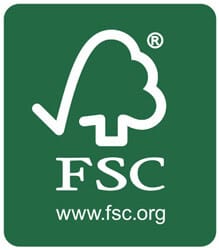Sustainable packaging material of Amanprana’s organic products
For us, sustainable packaging material means: Glass rather than plastic packaging, ecological paper and no test samples.
At Amanprana we prefer glass to plastic. If possible, we print with vegetable ink on ecological paper. We like to pay attention to ecological and healthy packaging. You have read it already, we believe in the whole and not in the parts separately, therefore our products have been processed as little as possible. We also take human, animal and environmental concerns into account as much as possible during the production process.
At Amanprana we strongly believe in the cradle-to-cradle principle. The cradle-to-cradle principle is a revolutionary vision on product design devised by the German chemist Michael Braungart and the American architect William McDonough (2002) and the core of the vision is waste = food. The waste from one product is the raw material for the other.
The cradle-to-cradle principle distinguishes five steps on the road to eco-effective product design:
Glass packaging material better for your health and glass better for the environment.
Glass packaging of products is not only better for your health but also for the environment. Glass is made from natural resources. There are no toxic substances like those found in plastic bottles. Consider substances such as vinyl chloride and dioxins. These are in fact released when plastic is burned. In addition, glass is not left behind in the environment.
The labels and cardboard packaging of Amanprana products are made from organic paper. The labels are made from sugar cane fibers. The sugar cane fiber paper is made from the waste from sugar cane plantations. This means that the sugar is extracted from the plant, after which the fiber is used to make paper. No trees are chopped down and no food is sacrificed for this purpose. It is also sustainable because the material needs only a small amount of processing to be converted into paper, so that it remains as close to nature as possible and is easy to compost. Combined with organic glue to keep it on glass packaging, it is a beautiful, effective and environmentally friendly label that fits in with Amanprana’s sustainable strategy,
We also try to take the environment into account as much as possible during the production process. For example, the cleaning products used in the production process, but also outside it, are made from plant-based ingredientsas far as possible . All the paper that is used at our offices has an FSC quality mark, is not printed unnecessarily and ends up as much as possible in the paper shredder where it can be added to the packages to be sent as padding for safe transport.
In addition to sustainable packaging material, Amanprana also has no test samples available. This is a conscious choice. It not only saves packaging. It also ensures that, in addition to the current production process for the products sold, there also has to be a production process for test samples. Because we understand that you, as a (potential) customer, would like to test our products, we have products in various points of sale that can be tested on site. Ask the retailer if these are available.
Asian influence on the cover of the book Eat well, that does you good by Chantal Voets Chantal opted for a bound book with an open spine and a cover that opens on the left side. Due to many travels in Asia and her affinity with Eastern philosophies and Eastern cuisine, the cover is Japanese inspired. Chantal: “We also get inspiration from the East for our Amanprana products. The book is a reflection of that.”
View the book

Environmentally friendly paper with FSC quality mark used by printer Eat well, it does you good The paper is Bioset paper which is wood-free, uncoated and natural. Only 3l of water is used in the production of 1gk paper (10l is common). The paper is FSC certified and produced chlorine-free (TCF); The manufacturer of the paper (Arctic Paper) is a CO2 friendly company with an EMA (Eco Management and Audit Scheme) approval.
Drukkerij Graphius in Ghent realizes that the environment is important: one of the most environmentally friendly printers in Belgium. The book was printed at Drukkerij Graphius in Ghent. They are very aware that their activities can affect the environment. As a result, they are very strict with all standards and regulations and they minimize all negative effects. The book Eat well that does you good is printed alcohol-free with vegetable inks, green electricity and the most economical use of ink.